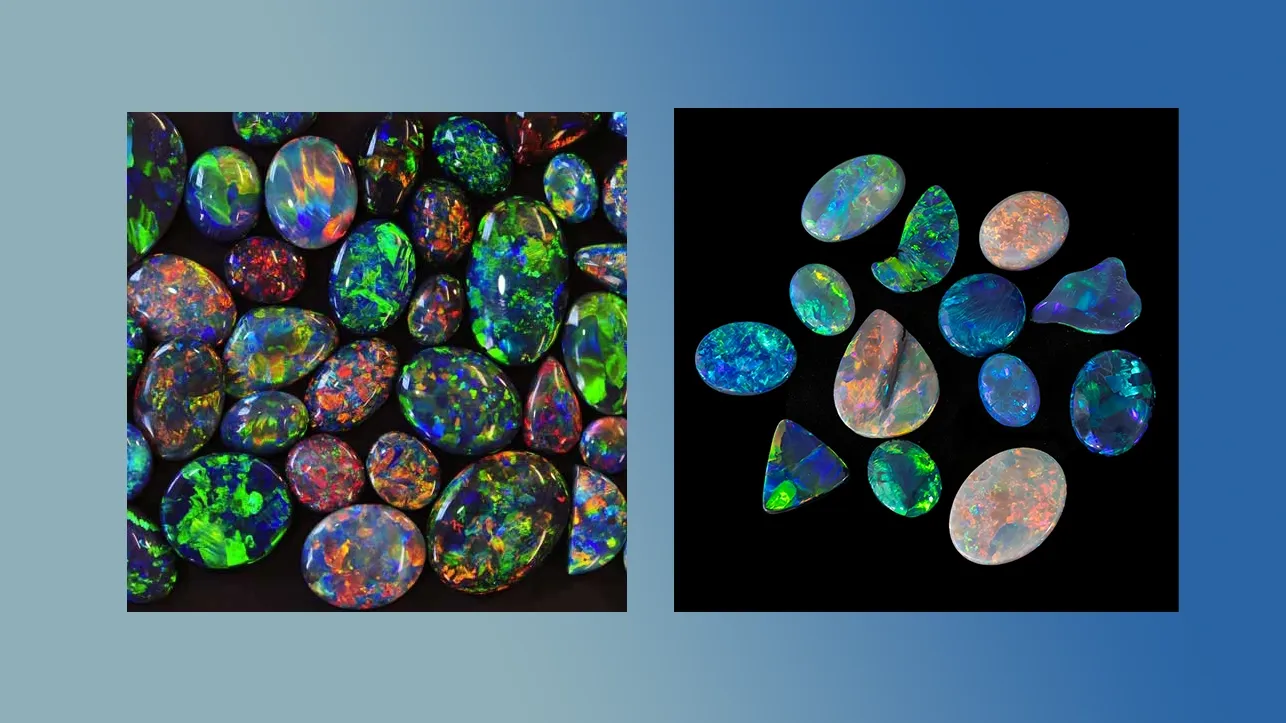Why Is Australian Opal So Expensive

Picture a gemstone that seems to hold the very essence of a fiery sunset, encapsulated within a rock. Australian opals, sourced from the heart of the Australian outback, possess a unique allure that has enthralled gem enthusiasts for generations. Yet, this captivating beauty often comes with a significant price tag. What sets Australian opals apart, making them such valuable treasures? In this blog post, we embark on a journey to unravel the secrets behind the high cost of these magnificent Australian gemstones.
1. The Geological Rarity
Australian opals owe their scarcity and resulting expense to their geological origins. These remarkable gemstones form in sedimentary rocks, where silica-rich water seeps into cavities over millions of years. The unique combination of factors necessary for this process, including the right mineral composition and the presence of water, makes such opal deposits exceptionally rare worldwide. The scarcity of these geological conditions elevates Australian opals to the ranks of coveted gems.
2. The Spectacular Play of Colors
One of the defining features of Australian opals is their mesmerizing play of color. This captivating phenomenon occurs due to the opal's unique internal structure, composed of tiny silica spheres. When light interacts with these spheres, it refracts and diffracts, producing a dazzling spectrum of colors. The intensity and brilliance of this play-of-color vary, with some opals displaying more vivid and intricate patterns than others. Opals with exceptional play-of-color are in high demand and command higher prices in the market.
3. Exceptional Quality and Clarity
Australian opals are renowned for their superior quality and clarity. The internal structure of these gemstones consists of silica spheres arranged in a particular manner. The spacing and uniformity of these spheres determine the opal's ability to diffract light and create its spectacular play of color. Opals with a tightly-packed, consistent sphere arrangement are exceedingly rare and represent the pinnacle of opal quality. Their scarcity further contributes to their elevated market value.
4. The Challenge of Mining
Mining for Australian opals is a demanding and complex process. It often involves labor-intensive work in extreme environments, such as sweltering deserts and deep underground tunnels. Opal deposits are notoriously unpredictable, making extraction a challenging endeavor. Miners must contend with both physical and logistical obstacles, including the high cost of equipment and infrastructure. These challenges drive up the operational costs of mining and, subsequently, the price of Australian opals.
5. Global Demand and Limited Supply
In an era of global connectivity, the demand for rare and exquisite gemstones like Australian opals continues to rise. However, the supply of top-quality opals remains limited. This imbalance between supply and demand naturally propels prices upwards, making Australian opals highly sought after by collectors, investors, and jewelry enthusiasts alike. The allure of owning a unique piece of nature's artistry further fuels their demand and price.
6. Cultural and Historical Significance
Beyond their geological and aesthetic appeal, Australian opals carry cultural and historical significance. They have been cherished by indigenous Australian communities for centuries and hold a special place in the nation's heritage. This cultural importance, coupled with their natural rarity, adds to their value and desirability in the gemstone market.
In sum, the extraordinary expense of Australian opals can be attributed to a confluence of factors, including their geological rarity, captivating play of color, exceptional quality, the challenges associated with mining, global demand outstripping supply, and their cultural and historical importance. These factors combine to make Australian opals one of the most treasured and sought-after gemstones in the world, both for their intrinsic beauty and their enduring value.
